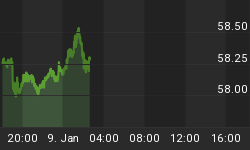The battle lines are clearly drawn. On the one side, investors have turned bearish citing the usual (and real, I might add) factors including but not limited to sovereign debt, Greece implosion, the weakening US economy, unemployment, the end of QE2, the start of QE3 and on and on. Yes, they are real reasons for concern, but truth be told and as I have pointed out before, they are nothing new on the radar. On the other side of the field, the bulls' main argument is the bears. Actually, it is the bears' extreme opinion about the prevailing headwinds facing this market. From a bulls' perspective, bearish extremes in investor sentiment are typically a good sign for higher prices.
So what is an investor suppose to do?
From this perspective, which is a data driven one, I believe that the market will bottom. The nature of the subsequent bounce and/or rally is always a concern as I don't pretend to have a crystal ball. The market really isn't too far off its highs, and other measures of sentiment (as detailed below) have yet to line up. I suspect they will over the next week. The bears could be right here, and if so, then so be it. However, my expectation based upon the data is that they will regret having sold. What is clear is that failure of the market to bottom and subsequently bounce would be an ominous signal.
The "Dumb Money" indicator (see figure 1) looks for extremes in the data from 4 different groups of investors who historically have been wrong on the market: 1) Investors Intelligence; 2) MarketVane; 3) American Association of Individual Investors; and 4) the put call ratio. This indicator is extremely bearish.
Figure 1. "Dumb Money"/ weekly
Figure 2 is a weekly chart of the SP500 with the InsiderScore "entire market" value in the lower panel. From the InsiderScore weekly report:
"Driven by insiders at Russell 2000 companies, market-wide sentiment improved demonstrably as the number of sellers declined more than -42% and the number of buyers increased approximately 10% from a week earlier. An Industry Buy Inflection - a quantitative indicator of a significant positive acceleration in insider sentiment - was triggered in the Russell 2000 and this has historically been a sign that the market is closing in on a near-term bottom. From 2004 through 2010, the triggering of an Industry Buy Inflection in the Russell 2000 "caught" 11 of 13 bottoms and the index rose an average of 4.2% over the following thirty days."
Figure 2. InsiderScore "Entire Market" value/ weekly
Figure 3 is a weekly chart of the SP500. The indicator in the lower panel measures all the assets in the Rydex bullish oriented equity funds divided by the sum of assets in the bullish oriented equity funds plus the assets in the bearish oriented equity funds. When the indicatoris green, the value is low and there is fear in the market; this is where market bottoms are forged. When the indicator is red, there is complacency in the market. There are too many bulls and this is when market advances stall.
Currently, the value of the indicator is 62.13%. Values less than 50% are associated with market bottoms. Values greater than 58% are associated with market tops.
Figure 3. Rydex Total Bull v. Total Bear/ weekly
















